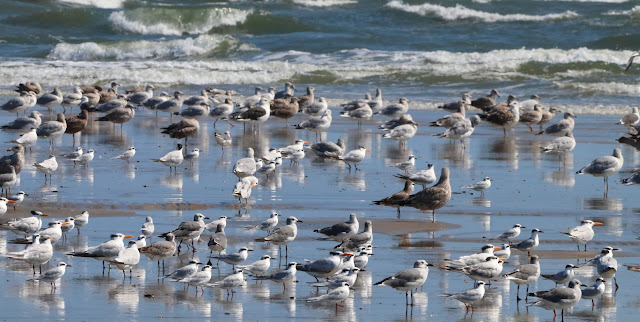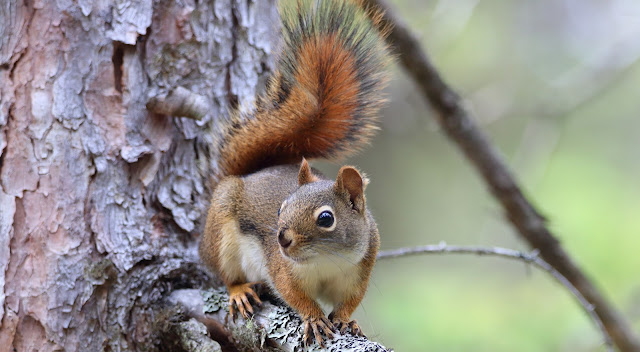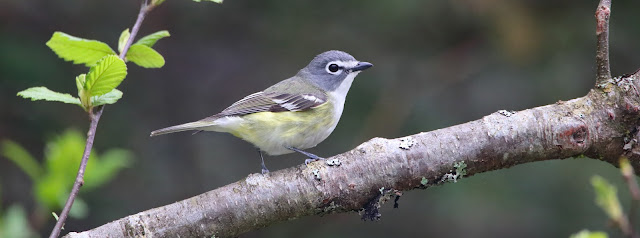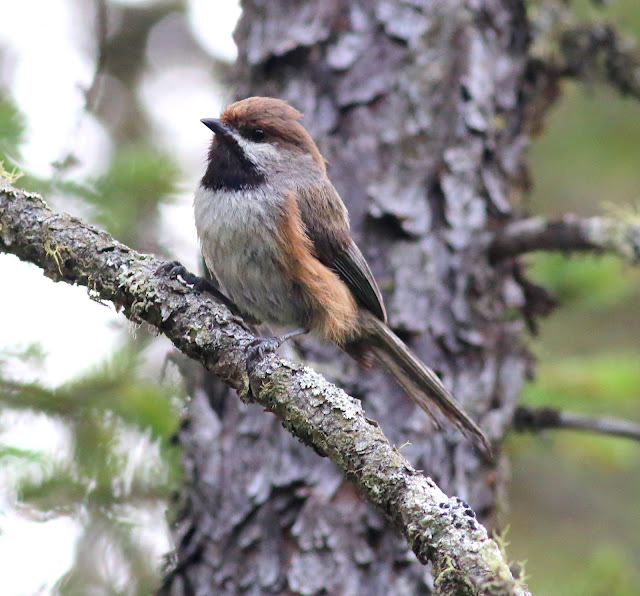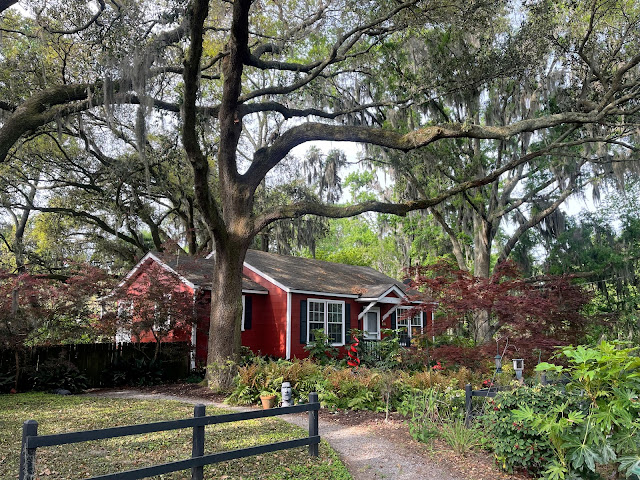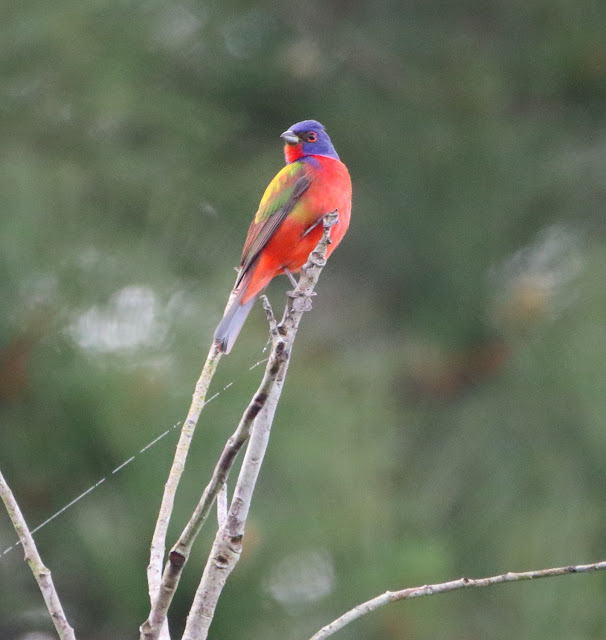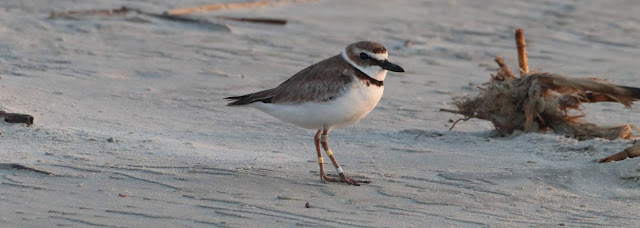Green Heron, Cypress Wetlands, Port Royal, SC
SOUTHERN SWING – VA, NC, SC, GA
(INCLUDING GREAT DISMAL, CONGAREE, AND OKEFENOKEE SWAMPS)
7-24 April 2024
Great-crested Flycatcher, Little St Simon's IslandI did a solo drive into the South to give talks to local Audubon groups and to sign and sell books in four states. The trip aligned with Johns Hopkins’ publication on 9 April of Birds of North America: A Photographic Atlas. Along the way I visited the three great eastern swamps: Great Dismal in northern North Carolina, the Congaree in central South Carolina, and Okefenokee in southernmost Georgia.
Barred Owl, Congaree Swamp, SC
On Day One I drove to Newport News, VA, to meet Dick and Terry Kokko to tour the Mariners’ Museum and see the remnants of the USS Monitor, which won the battle of the ironclads in 1862 in the waters of Hampton Roads. Dick is a classmate from Williams College class of 1974 (fast approaching its 50th reunion). That night I spoke at the Virginia Beach Audubon Society.
Great Dismal Swamp Canal, NC
The next day the Kokkos and I walked the boardwalk at Dismal Swamp State Park and also toured South Mills, NC, where my maternal grandfather spent his childhood summers. I had last visited South Mills with my grandfather in 1964. South Mills is also site of a Civil War engagement. The swamp boardwalk is short but nice, and some of the swamp warblers were in song.
South Mills, NCOn 9 April I drove to Port Royal, South Carolina, where I spent two nights at the home of Sally Jessee, set under Spanish Moss-bedecked Live Oaks. Port Royal is the location of the oldest Western settlement in North America (by Jean Ribault in 1562).
downtown
Port Royal, SCThe gorgeous little town reminds me of St. Francisville, Mississippi, with the quaint pastel-colored houses and ancient Live Oaks. It also features Cypress Wetlands, a rookery of herons and Wood Storks in the heart of the town itself. A boardwalk gives ready access to the nesting birds. The region flooded Thursday morning when more than four inches of rain fell from a major system that passed over.
Tricolored Heron, Cypress Wetlands, Port Royal, SCIn the Low Country of South Carolina, I gave talks to Audubon groups at Fripp Island, Palmetto Bluff, Spring Island, and Hilton Head, which introduced me to a series of lovely planned communities set in lush green spaces.
Spanish Moss in Live Oaks, Spring Island, SCConservationist/Scientist Andy Jones gave me a morning tour of the natural wonders of Spring Island, which featured tracts of maritime forest, marshland, and historic tabby remnants of a former “big house” of the island. The polychromatic Fox Squirrel population on the island was a treat to see. Some are black-headed whereas others are nearly all-black.
Roseate Spoonbill nesting pair, Norm's Pond, Little St Simon's IslandNan Contel (another Williams 1974 classmate) hosted me on Hilton Head, which was preparing for the Heritage Golf Tournament. I did a Hilton Head Audubon talk in nearby Bluffton, a morning event at the home of HH Audubon President Kay Grinnell and her husband Phil, and a birdwalk with the Audubon group to Pinckney Island National Wildlife Refuge (4,053 acres).
Black-bellied Whistling-DucksHighlights of the Pinckney bird walk, led by Lynn Hodgson, included a singing male Painted Bunting, another bustling heron and stork rookery, and a number of wood warblers in song. Nan Contel’s backyard featured Black-bellied Whistling-Ducks that visit the feeder along with adorable Brown-headed Nuthatches and Pine Warblers.
Common Gallinule adult and young, Pinckney Island National Wildlife Refuge, SCFrom Hilton Head I shifted base to the Savage Island campground of Fort McAllister State Park in Richmond Hill, Georgia (just south of Savannah). The island, cloaked in maritime forest, featured a few bird highlights: singing Yellow-throated Warbler, nesting Red-headed Woodpecker, and vocal Brown Thrasher.
Two views of Fort McAllister State Park, GA (above two images)Next morning I rose early, broke camp, and drove to Judy Johnson’s home in Richmond Hill. We then traveled to Forsyth Park in downtown Savannah for an Ogeechee Audubon morning bird walk, attended by about 20 eager birders and led by top-flight birder Diana Churchill.
Birders examining a Worm-eating Warbler in a Live Oak, Forsyth Park, Savannah, GAThe large city Park features plantings of grand Live Oaks that pull in overflying migrants. Our best birds included very cooperative Worm-eating and Black-and-white Warblers, Baltimore Oriole, and several other wood warbler species. There was no “fall-out” this morning. The park is a good birding venue. We ended the morning with a delicious breakfast at the Sentient Bean, right on the southern verge of the Park.
Monument and birders in Forsyth Park, Savannah, GAOn the 17th of April, Judy and I rose early to visit Harris Neck National Wildlife Refuge, a bit south of Richmond Hill. We encountered big flocks of foraging herons, ibis, and storks in managed wetlands, a rookery, and lots of maritime forest and edge.
Large American Alligator showing its pearly whites, Harris Neck National Wildlife Refuge, GA
Singing male Painted Bunting, singing Swainson’s Warbler (not seen), Summer Tanager, Black-throated Blue Warbler, were among the highlights. Also there was major gator action…. We encountered some big ones sunning on the dikes.
Male Painted Bunting, Harris Neck National Wildlife Refuge, GAIn late morning I departed Judy and drove to Waycross, Georgia, where I set up camp at Laura Walker State Park, positioning myself to explore the 630-square-mile Okefenokee National Wildlife Refuge the next morning. The State Park was pleasant but not very birdy. Highlights: Purple Martins, noisy Common Nighthawks overhead in the evening, and Barred Owls hooting in the pre-dawn hours.
Foraging aggregation of Wood Storks and egrets, Harris Neck NWRThe Okefenokee was excellent. Bachman’s Sparrows were abundant and vocal in the Longleaf Pine savannas of the Upland Discovery Trail.
Bachman's Sparrow, Okefenokee NWR, GARed-cockaded Woodpeckers were more recondite. It took me 3 hours of searching to track down a pair of the little woodpecker species, though I did see a number of human-manufactured nest holes installed in some of the pines. These artificial nests are one of the tools that managers use to keep the woodpeckers productive in areas where the trees do not offer ideal nesting conditions (the redheart disease, traditionally necessary to make the pines good nesting trees, appears only in older and larger trees).
pair of Red-cockaded Woodpeckers, Okefenokee NWRThe long linear boardwalk jutting into the swamp is a worthy walk ending with a tall observation tower. I encounter six busloads of first-graders and parents joyfully trekking the boardwalk. It was heartening to see them venturing into the Okefenokee.
Longleaf Pine savannah favored by Bachman's Sparrow and Red-cockaded Woodpecker
vista out over Okefenokee Swamp from tower at end of boardwalk I found a Barred Owl in a moss-draped cypress from the tower at the end of boardwalk.
Barred Owl in Spanish MossAlso a singing Northern Parula, which is a true moss-lover.
male Northern Parula WarblerIn the afternoon I arrived at St. Simons Island and the Hampton River Marina parking lot where I got the ferry boat to Little Saint Simons Island, my next stop. I was scheduled to give a talk and participate in some nature walks. About twenty of us ferried out to the private island, which features a rustic and accommodating eco-lodge nestled in the woods. Yellow-throated Warblers on territory were about in abundance, singing all day long.
Willet on flight, Little Saint Simon's Island, GAMy visit was scheduled for the “spring birding days.” I was joined by British mathematician/ornithologist Richard Hall of the University of Georgia. We were here to entertain the birding crowd in after dinner sessions.
beach artefacts, Little St Simon's Island
The 11,000 acre private island has been placed in a conservation easement and the lodge accommodates a maximum of 32 visitors. It has 7 miles of undeveloped beach, sound-side estuary, maritime forest, managed water features and ponds, and extensive marshland.
Royal Terns loafing on beach with two Ruddy Turnstones, Little St Simon's IslandThe first morning we quietly boated Mosquito Creek, watching Least Bitterns, Clapper Rails, Nelson’s Sparrows, and many other species of lesser note.
male Anhinga, Little St Simon's IslandAt one point we saw four bitterns in a single cluster clinging to marsh grass Sporolobus alterniflorus (formerly in the genus Spartina). This was the only outing in which I decided to not tote my long lens (mistake!!). Others got stunning pix of the bitterns at close range as well as the marsh sparrow with its extensive ochre wash.
Palamedes Swallowtail, Little St Simon's Island
In the evening we heard Eastern Screech-Owl and two Chuck-will’s-widows.
Red-headed Woodpecker, Little St Simon's Island, GA
Norm’s Pond offered a close-up and busy rookery, some egrets already with youngins’.
adult Great Egret tending nestling, Little St Simon's Island, GA
I saw a single migrating Swallow-tailed Kite in the PM (just below).
displaying adult Green Anole, showing its dewlap, Little St Simon's Island
The beach at low tide was productive, with terns and shorebirds, including more than 200 Red Knots.
Red Knot flock, Little St Simon's Island
I counted 13 Wilson’s Plovers on a two-mile stretch of beach.
a color-banded Wilson's Plover adult male, Little St Simon's IslandIt was a surprise to encounter an Atlantic Sharp-nosed Shark in the riffle zone of the shore where the water was less than a foot deep. What was it doing? Hunting or spawning?
Atlantic Sharp-nosed Shark, Little St Simon's IslandI dipped on Eastern Diamondback Rattlesnake, but Carol Behnke provided an image that appears below, shot the day I arrived on island.
Painted Buntings came into the Lodge feeder, allowing close approach.
male Painted Bunting in cage-like feeder, Little St Simon's Island After departing LSSI I drove in the chilly rain north to the Congaree National Park, near Columbia, SC. Since the Longleaf campground I booked offered a minimalist camping space with no adjacent parking lot or picnic table, I bailed and relocated to an eclectic nearby bed-and-breakfast (Woodland Gardens) and camped there in the woods. It was a cold night as a front passed through.
grand canopy of forest at Congaree National Park, SCNext morning I had the 2.4-mile-long Congaree Swamp boardwalk to myself and it was a stunner! Giant trees. Tall trees. Swamp forest. Barred Owls hooting. This is the tallest ancient forest in the East. As I started the boardwalk in the gloom, a Pileated Woodpecker did its drum on a loud resonating hollow stump, echoing through the forest as a welcome call to me. The sound was majestic.
boardwalk, Congaree National Park, SCThis, the largest tract of old growth forest in the East, was set aside in 1976 in this park of 26,900 acres. Among the tallest deciduous forests on Earth. Hurricane Hugo knocked down many of the forest giants in 1989 but much remains.
It was amazing to encounter a Loblolly Pine with a diameter of 5 feet and height of 150 feet. Right down mixed in with in the bottomland Swamp Tupelo forest.
giant Loblolly Pine seen from the boardwalk, Congaree National Park, SCI departed mid-day for NC and Hanging Rock State Park, north of Winston-Salem. I saw distinctive Pilot Mountain to the west. Hanging Rock is upland—an outlier of the Blue Ridge. I climbed the Hanging Rock trail at the end of the day and saw blooming rhododendron and azalea.
vista from Hanging Rock, in Hanging Rock State Park, NC
I heard Ovenbird, B&W, Pine, and Myrtle Warbler.
Pine Warbler, Hanging Rock State Park, NCAfter a cool night the morning temp was 46 F here. In the morning I walked the Lake Trail and heard Blue-headed, Yellow-throated, and Red-eyed Vireos.
I next drove to Pocahantas State Park just south of Richmond, VA, spending the PM there, walking the Beaver Lake Trail. Beautiful, tall, deciduous forest with lots of American Beech. This 8,000-acre reserve is the largest Virginia state park.
I stayed the night in Richmond with Mary Elfner and gave a talk to the Richmond Audubon Society at the modern-looking Unitarian-Universalist Church downtown.
The final morning of my trip (24 April) I went birding with Mary, Paul Bedell, and Todd Dixon at the 42nd Street entrance to James River Park. The morning featured gloomy weather but there were songbird residents and migrants in this riverside green space right in the city. Prothonotary, Blue-winged, B&W, Yellow-throated Warbler, Northern Parula, Scarlet Tanager, Rose-breasted Grosbeak, and more…
The trip closed with a drive up Interstate 95 without bad traffic (a miracle!). Home before noon. Resolution: I need to return to Congaree Swamp to explore the old trees in greater detail…maybe next spring…
Turkey Vulture sunning, early AM, Little St Simon's Island, GA





